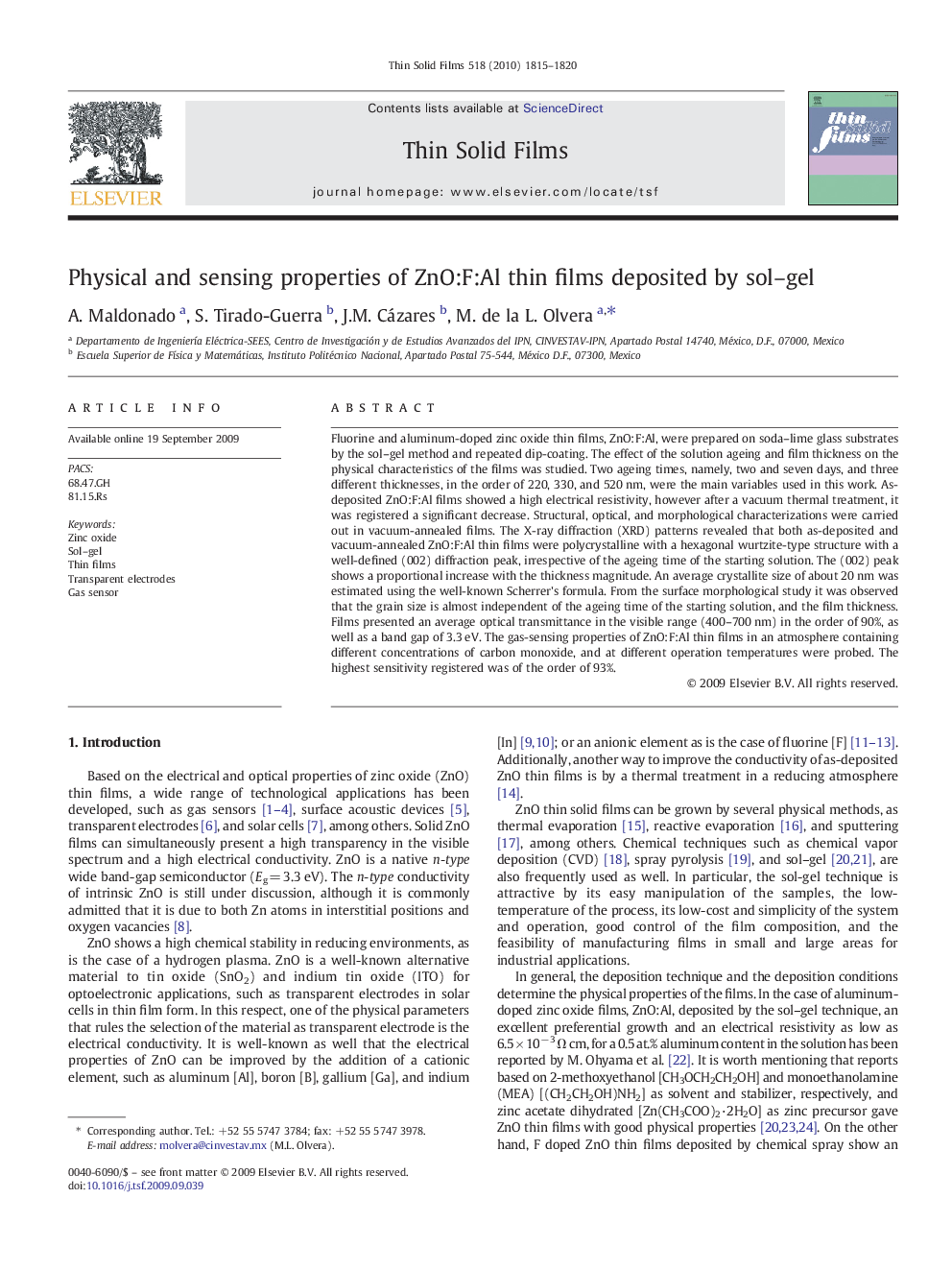| Article ID | Journal | Published Year | Pages | File Type |
|---|---|---|---|---|
| 1671547 | Thin Solid Films | 2010 | 6 Pages |
Abstract
Fluorine and aluminum-doped zinc oxide thin films, ZnO:F:Al, were prepared on soda-lime glass substrates by the sol-gel method and repeated dip-coating. The effect of the solution ageing and film thickness on the physical characteristics of the films was studied. Two ageing times, namely, two and seven days, and three different thicknesses, in the order of 220, 330, and 520Â nm, were the main variables used in this work. As-deposited ZnO:F:Al films showed a high electrical resistivity, however after a vacuum thermal treatment, it was registered a significant decrease. Structural, optical, and morphological characterizations were carried out in vacuum-annealed films. The X-ray diffraction (XRD) patterns revealed that both as-deposited and vacuum-annealed ZnO:F:Al thin films were polycrystalline with a hexagonal wurtzite-type structure with a well-defined (002) diffraction peak, irrespective of the ageing time of the starting solution. The (002) peak shows a proportional increase with the thickness magnitude. An average crystallite size of about 20Â nm was estimated using the well-known Scherrer's formula. From the surface morphological study it was observed that the grain size is almost independent of the ageing time of the starting solution, and the film thickness. Films presented an average optical transmittance in the visible range (400-700Â nm) in the order of 90%, as well as a band gap of 3.3Â eV. The gas-sensing properties of ZnO:F:Al thin films in an atmosphere containing different concentrations of carbon monoxide, and at different operation temperatures were probed. The highest sensitivity registered was of the order of 93%.
Related Topics
Physical Sciences and Engineering
Materials Science
Nanotechnology
Authors
A. Maldonado, S. Tirado-Guerra, J.M. Cázares, M. de la L. Olvera,
